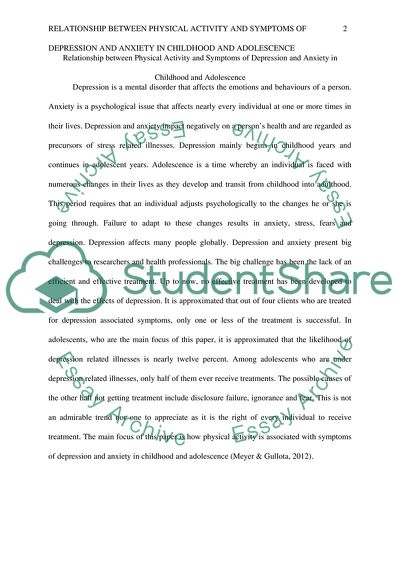Cite this document
(Relationship between Physical Activity and Symptoms of Depression and Coursework Example | Topics and Well Written Essays - 4500 words, n.d.)
Relationship between Physical Activity and Symptoms of Depression and Coursework Example | Topics and Well Written Essays - 4500 words. https://studentshare.org/psychology/1828825-discuss-the-relationship-between-physical-activity-and-symptoms-of-depression-and-anxiety-in-childhood-and-adolescence
Relationship between Physical Activity and Symptoms of Depression and Coursework Example | Topics and Well Written Essays - 4500 words. https://studentshare.org/psychology/1828825-discuss-the-relationship-between-physical-activity-and-symptoms-of-depression-and-anxiety-in-childhood-and-adolescence
(Relationship Between Physical Activity and Symptoms of Depression and Coursework Example | Topics and Well Written Essays - 4500 Words)
Relationship Between Physical Activity and Symptoms of Depression and Coursework Example | Topics and Well Written Essays - 4500 Words. https://studentshare.org/psychology/1828825-discuss-the-relationship-between-physical-activity-and-symptoms-of-depression-and-anxiety-in-childhood-and-adolescence.
Relationship Between Physical Activity and Symptoms of Depression and Coursework Example | Topics and Well Written Essays - 4500 Words. https://studentshare.org/psychology/1828825-discuss-the-relationship-between-physical-activity-and-symptoms-of-depression-and-anxiety-in-childhood-and-adolescence.
“Relationship Between Physical Activity and Symptoms of Depression and Coursework Example | Topics and Well Written Essays - 4500 Words”. https://studentshare.org/psychology/1828825-discuss-the-relationship-between-physical-activity-and-symptoms-of-depression-and-anxiety-in-childhood-and-adolescence.


